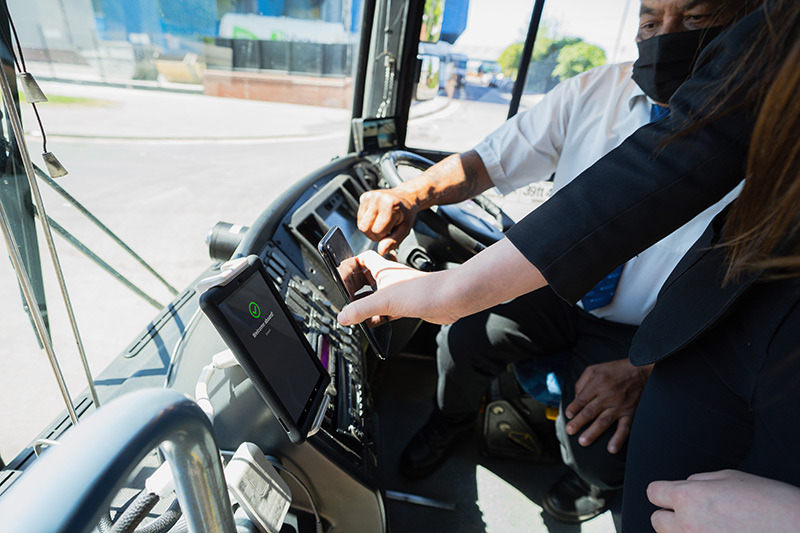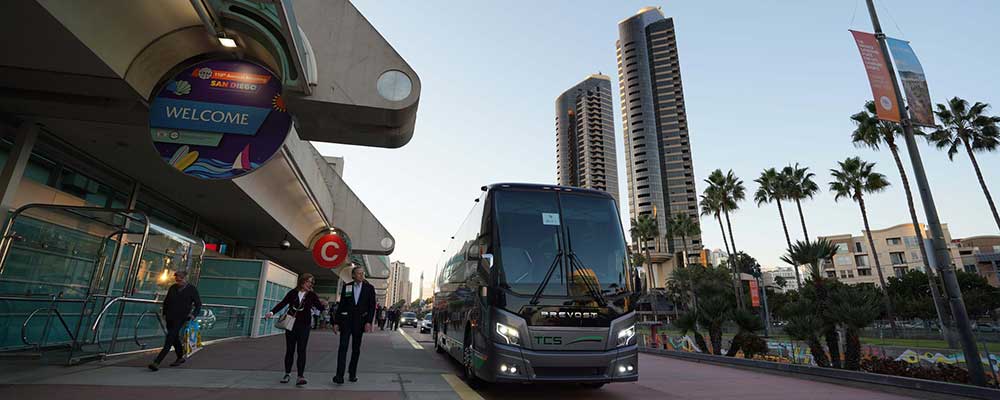20 Best Ideas For Deciding On Employee Shuttle Sites
20 Best Ideas For Deciding On Employee Shuttle Sites
Blog Article
Top 10 Tips For Selecting The Right Vehicle And Capacity For Employee Shuttle Transportation
Here are 10 top tips for choosing the right size vehicle and its capacity to transport employees:
1. Find out the needs of employees for transportation
Start by conducting a thorough analysis of your employee base in order to figure out the number of employees who will utilize the shuttle service regularly. Take into consideration factors like the size of the workforce, shifts of work and peak times for usage. This information will help you choose the correct vehicle capacity and ensure that the shuttles have the capacity to handle a wide range of passengers.
2. Choose the right vehicle type
Based on the amount of employees as well as their particular requirements, select the vehicles that best meet your needs for shuttle services. There are minibuses available, as well vans or larger buses. Minibuses are ideal for smaller groups since they can fit into tighter places, while large buses are ideal for larger groups. Look over the layout to see whether it has comfortable seating, and enough space to store luggage.
3. Evaluate Fuel Efficiency
Costs for fuel can have an impact on the overall budget of shuttle service. Make sure to choose fuel-efficient vehicles in order to cut down on operating costs. Think about hybrid and electric vehicles too, since they are more sustainable and provide savings in the long-term. By comparing the efficiency of fuel of different models, you can make an informed choice that balances both capacity and cost-effectiveness.
4. Consider Accessibility Features
Assure that certain vehicles meet accessibility standards in order to allow disabled employees. It includes features like wheelchair lifts, lower floors that enable those with mobility issues to get into the vehicle and seating that is specifically designed for those with mobility issues. Accessible transportation isn't just required by law however, it also helps to create an inclusive workplace.
5. Plan to grow and be flexible
The size of the workforce could change with the growth of organizations. When selecting the right vehicles for your business it is important to consider the possibility of the future growth of your business. When selecting vehicles, take into consideration the possibility of growth in the future.
6. Find out about safety features and ratings
Transport for employees should be safe. Check out the safety attributes and rating of vehicles before deciding which one to choose. Choose vehicles that have advanced safety technologies like anti-lock braking systems, stability control systems and collision prevention systems. Check that the vehicle complies with the federal and local standards to ensure safety for your employees.
7. Examine reliability and maintenance
Select vehicles that require minimal maintenance and are trustworthy. A vehicle that frequently requires repairs may disrupt shuttle services and cause employee discontent. You should look into the reliability ratings of different brands and models, and establishing a schedule of maintenance to keep your vehicles in good working order. This can prolong their life.
8. GPS and Fleet Management Software
Implementing GPS tracking software and fleet management will improve the efficiency of shuttle services. These tools provide real-time tracking and route optimization according to the patterns of traffic and schedules of employees. In addition, software to manage fleets can assist track vehicle performance in terms of fuel consumption, as well as maintenance requirements, making sure that vehicles are utilized efficiently.
9. Implementing Feedback Mechanisms for Employees
Encourage your employees to give feedback about the comfort of their vehicle and its capacity through surveys or suggestion boxes. Knowing their experiences can help identify issues like overcrowding and seating comfort. This feedback should be reviewed often to allow for adjustments to vehicle or service in order to create a positive experience.
10. Total Costs of Ownership How to budget?
When you are choosing a vehicle it is important to consider the total costs of ownership (TCO) which includes costs for purchase as well as insurance, fuel, maintenance and depreciation. TCO analysis allows you to make educated decisions that balance initial costs with operating expenses in the long run. The expenses of a car can be evaluated to determine if it can meet budgetary requirements while maintaining reliability and capability.
Use these guidelines to ensure that your organization can choose the correct vehicle and to manage the size of employee shuttles. See the most popular additional hints for employee transportation for site info including miami airport shuttles, transportation private, airport shuttle, shuttle van, transportation to lax, bus shuttle, shuttle to and from airport, airport transportation near me, shuttle transportation to airport, car service to and from airport and more.
10 Tips For The Cost And Budget Considerations Of An Event Transportation Service For Corporate Events.
Here are 10 tips to help you determine the cost and budget of the corporate transportation services.
1. Conduct a Comprehensive Cost Analysis
Begin by conducting an analysis of costs for every aspect of your transportation services. This includes rental or leasing costs, fuel costs and driver's salaries as well as insurance, maintenance as well as any other charges related to parking permits or permits. Understanding the total price can help you develop a an affordable and realistic budget.
2. Budget Framework: Develop an Clear Budget Framework
Create a budget for your organization to determine how much it is willing to invest in transportation. This framework should include all the identified expenses, and also allow for flexibility to handle any unexpected costs. A budget can guide the decision-making process and ensures that transport costs are able to be managed.
3. Explore a variety of transportation options
Explore the various transportation options that are available, such as shuttles, vans, and rideshare services. Calculate the cost associated with each transportation option. Consider aspects like convenience, comfort and capacity. Selecting the best option that will meet the needs of guests will allow you to maximize the cost of transportation.
4. Transport Providers: Conclude contracts
You can negotiate contracts with transportation companies to get the most competitive price. Numerous transportation companies are willing to provide discounts for big bookings or events for corporate clients. Good relationships with service providers could allow you to receive better rates as well as better services, which will ultimately aid your budget.
5. Plan for Fuel Prices
Costs for fuel could have a significant effect on the overall cost of transportation. Calculate the amount of travel you will need to make and the distance needed to get there. the event. Reduce costs by negotiating fuel-efficient car types with your transportation provider.
6. Include Contingency Funds
Make sure to set aside a certain amount of your budget for an emergency fund to cover unexpected costs. Transportation can be unpredictable with issues such as vehicle failures or additional trips. The contingency plan will ensure that you're prepared to handle any situation without going over budget or compromising on service quality.
7. Consider Group Discounts and Packages
Transportation companies typically offer special deals or discounts for groups. There are many companies offering discounted rates for large groups or corporate functions. This could result in significant savings. Find out about packages that provide additional services for a discounted price for example, additional vehicles or on-site coordination.
8. Monitor and Track Expenses
Maintain a close watch on all transportation-related expenses throughout the planning and execution phases. Track costs using spreadsheets or budgeting software. Monitoring expenses can help to identify areas to cut and help keep the budget in line.
9. Gather feedback for future budgeting
When the event has ended, you should collect feedback from attendees about their transport experiences and expenses. The analysis of feedback will give you insight into the effectiveness of the transportation service, and informing future budgeting. Knowing what was successful and what wasn't aids in adjusting budgets for future events.
10. Estimate the Total Costs of Ownership
Be aware of the total cost of ownership (TCO) When evaluating the options for transportation. It does not just include the initial rental or purchase cost, but also all ongoing costs like maintenance, insurance, and depreciation. Knowing TCO can assist you in making informed decisions to keep in mind the initial costs and the long-term financial consequences.
If they follow these guidelines, companies can budget and manage costs effectively for corporate transportation services. The budget will not only aid in meeting the transportation requirements however, it will also help in the overall success and enjoyment of the event. A well-planned budget and cost management will boost the credibility of your business and demonstrate that you are committed to accountability and efficiency. Check out the recommended event transportation advice for website recommendations including solution transport, logistics transportation services, luxus transportation, transport and logistics, vehicular transport, companies in logistics, trucking services near me, company transport, it's logistics, reach logistics and more.